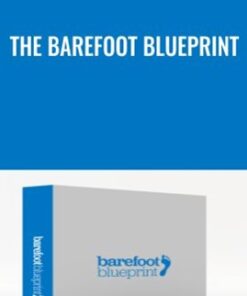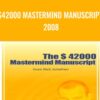-
×
 10 Steps to Greater Confidence and Self-Esteem - Alexis Meads
1 × $42.00
10 Steps to Greater Confidence and Self-Esteem - Alexis Meads
1 × $42.00 -
×
 Cardiopulmonary Therapy for the Rehab Professional: Therapeutic Interventions for All Aspects of Cardiac Care - From ICU to Outpatient - Cindy Bauer
1 × $84.00
Cardiopulmonary Therapy for the Rehab Professional: Therapeutic Interventions for All Aspects of Cardiac Care - From ICU to Outpatient - Cindy Bauer
1 × $84.00 -
×
 The Barefoot Blueprint
1 × $51.00
The Barefoot Blueprint
1 × $51.00 -
×
 Millionaire Mafia Instagram Mastery 3.0 – Ben Oberg
1 × $123.00
Millionaire Mafia Instagram Mastery 3.0 – Ben Oberg
1 × $123.00 -
×
 Spanish for HealthCare Professionals: Intensive Online Course - Tracey Long
1 × $65.00
Spanish for HealthCare Professionals: Intensive Online Course - Tracey Long
1 × $65.00
You may be interested in…
-
Add
 $42000 Mastermind Manuscript 2008 - Rich Schefren
$42000 Mastermind Manuscript 2008 - Rich Schefren
$27.00Original price was: $27.00.$23.00Current price is: $23.00. -
Add
 'MAGNETIC INFLUENCE' - Magnet for Money, Charisma, Confidence! - Dani Johnson
'MAGNETIC INFLUENCE' - Magnet for Money, Charisma, Confidence! - Dani Johnson
$397.00Original price was: $397.00.$63.00Current price is: $63.00. -
Add
 10x Wealth and Business New – Brendon Burchard
10x Wealth and Business New – Brendon Burchard
$1,497.00Original price was: $1,497.00.$123.00Current price is: $123.00.
![Courses[GB]](https://coursesgb.store/wp-content/uploads/2024/03/CoursesGB-Logo-40px.png)
![Indiana Mental Health & The Law - 2020 - Phyllis Garrison » Courses[GB] Indiana Mental Health The Law 2020 » Courses[GB]](https://coursesgb.store/wp-content/uploads/2021/06/Indiana-Mental-Health-The-Law-2020-100x100.jpg)
![Legal Issues in Behavioral Health Maryland: Legal and Ethical Considerations » Courses[GB] Legal Issues in Behavioral Health Maryland Legal and Ethical Considerations » Courses[GB]](https://coursesgb.store/wp-content/uploads/2021/06/Legal-Issues-in-Behavioral-Health-Maryland-Legal-and-Ethical-Considerations-100x100.jpg)
![Expressive Arts Therapy as Somatically-Based Interventions with Trauma: Using Rhythm, Movement, Sound, and Imagery for Embodied Awareness - Cathy A. Malchiodi » Courses[GB] Expressive Arts Therapy as Somatically Based Interventions with Trauma » Courses[GB]](https://coursesgb.store/wp-content/uploads/2021/06/Expressive-Arts-Therapy-as-Somatically-Based-Interventions-with-Trauma.jpg)
 Purchase this course you will earn
Purchase this course you will earn
Reviews
There are no reviews yet.